UPDATE: Jim Lahey's new book My Pizza hit shelves last week (read on below for his no-knead pizza dough recipe and why we love it). To celebrate, Clarkson Potter is giving away 12 copies of the book to our readers!
To win a copy, just tell us your dream pizza topping combination in the comments below by Monday, March 26th at noon EST. (For example, Lahey likes things like walnuts and shiitake; Thai eggplant and bonito flakes -- go wild!) We'll pick 12 winning pizzas that wow us and make us hungry.
We have winners! Congrats to za'atar, gingerroot, freida2020, bebe le perche, Carly DeFelippo, MandT, seasonalfeast, PepLV, yenyen, Burf, Amypineapple,and Heena -- we'll be emailing you to collect your addresses, and then My Pizza will be yours! Thanks to everyone for sharing your dream pizzas. You succeeded in making us very, very hungry.
_________________
Every week, FOOD52's Senior Editor Kristen Miglore is unearthing recipes that are nothing short of genius.
The no-knead bread revolution finally comes to pizza -- and it's even more revolutionary.
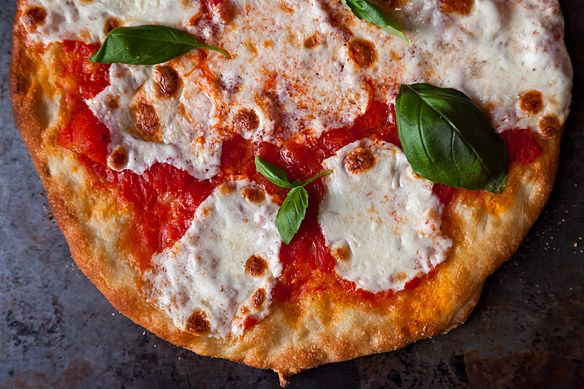
- Kristen
The internet got its first viral recipe in 2006, when Mark Bittman brought Jim Lahey's technique for No-Knead Bread to light in the New York Times. (It proved far more useful than the Bacon Explosion, the internet's second viral recipe.)
Not-kneading tore through the blogosphere and, unlike the Explosion, it stuck -- seeding something of a revolution. (Have you tried it? I bet you have!)
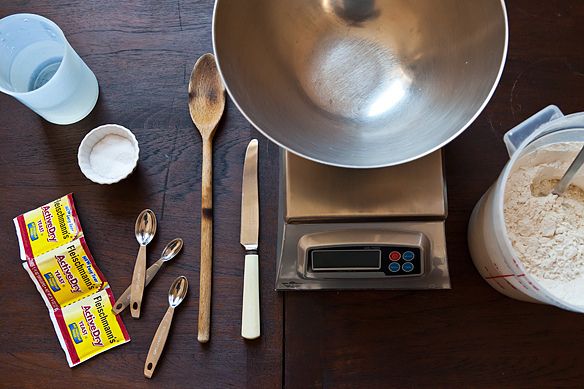
Its instant and lasting popularity is not because kneading is so strenuous (it'll never cramp your biceps like whipping egg whites will), but because it requires an understanding. You must form a relationship with your dough, find your rhythm, and sense when it's feeling too dry, or leathery, or loose (and how to fix it).
These are worthy and satisfying pursuits, but they give cooks enough pause that bread-baking was once reserved for dedicated hobbyists. People even got really into bread machines there for awhile, which happily seem to have gone the way of the milkshake mixer and the grapefruit knife.
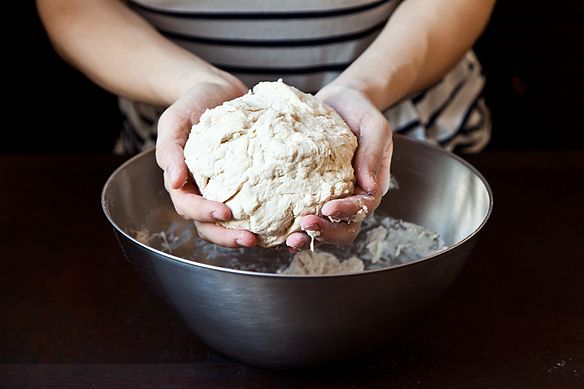
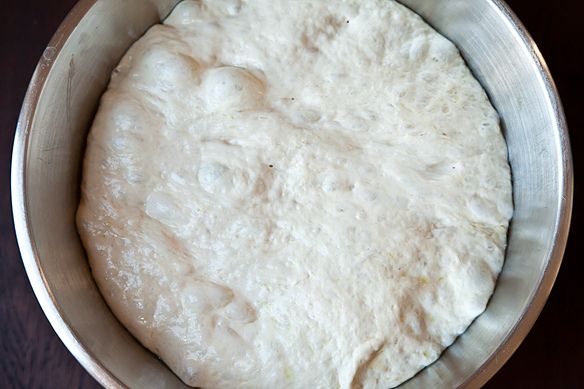
So when Bittman urged, "Let time do the work," we listened. And he wasn't kidding -- after mixing up your flour, salt, yeast, and water, you just flop the dough around a couple times and wait till it's time to bake. 18 or so hours and a smidgen of yeast will have done all the rising, relaxing, and gluten-forming for you.
And thus Bittman and Lahey brought homemade, machine-less bread (and confidence) back to the home cook. But still, Lahey's pizza dough was a different animal -- it used a lot more yeast for a short, furious rise. Slowly developing nuanced flavor in his crust wasn't a priority to him when My Bread came out in 2009. Back then, he was using the dough Roman-style at Sullivan Street Bakery, as nothing more than a thin, crackery base for more flavorful layers of toppings like shaved cauliflower and green olives.
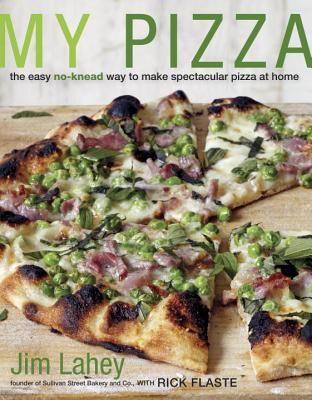
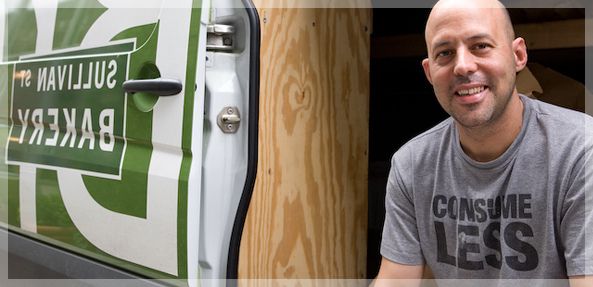
But ever the mad, tinkering genius, he couldn't stop there. In late 2009, he opened the elegant pizzeria Co. and, this March, he's releasing a new book called My Pizza, with a newly refined version of his classic long-rise, no-knead technique. "The lesson here is understanding that without fermentation the dough won't be that interesting," Lahey explains. He even extensively walks us through tricks for getting good pizza from electric ovens, oddly placed broilers, etc. (Hear that, Steingarten?)
Not-kneading pizza is even simpler than not-kneading bread, if you can believe that. You just mix your dough together the night before your pizza party, leave it in a warm spot to bloat into a slightly tacky mass, then stretch it into fragrant, bubble-pocked disks. Like his bread, it's the wet dough that makes for a steamy, puffed interior with a chewy, crackling surface. It may or may not make round pizzas, but Lahey doesn't care.
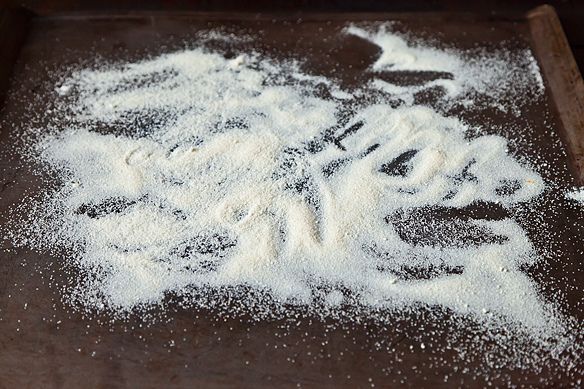
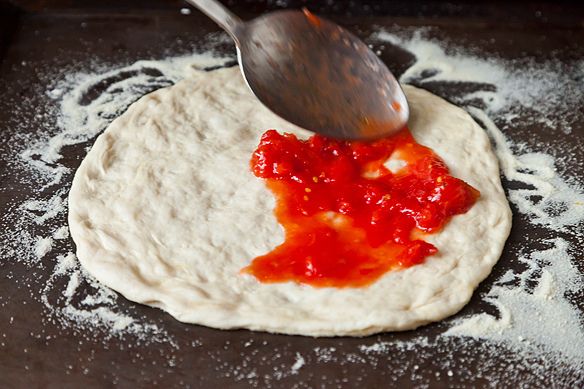
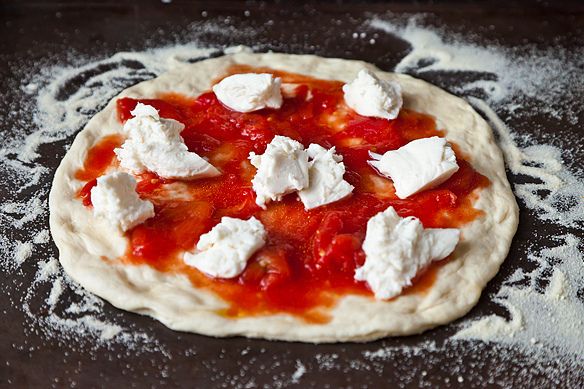
From this noble base, the book is filled with curious toppings that are streamlined and smart -- not California-style wacky for the sake of wacky. Charred thai eggplant is garnished with bonito flakes, clumps of shiitake top a walnut onion puree, and, in the Popeye Pie, three cheeses are tucked beneath a mountain of spinach leaves.
And then there's his pepperoni, which he says "has caused servers at the restaurant untold moments of awkwardness" as they're forced to tell customers that this pizza has none of the pepperoni they know, only red pepper puree (salted with fish sauce!), lamb merguez, mint and pecorino. He's not a liar, he's just being literal. Pepperoni means peppers.
If we revolutionaries have learned anything from the internet, it's that we'd best listen to Jim Lahey. He'll probably be bored by us, but here we went with his classic Margherita Pie, and it was awfully good.
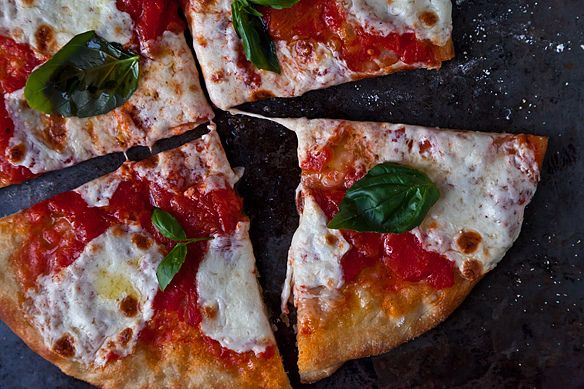
Note: The recipe as published doesn't recommend freezing the dough. However, when asked about this, Lahey alluded to other, more advanced biological capabilities we have in freezing, and as such pizza dough should present no problem.
Jim Lahey's No-Knead Pizza Margerita
Making the Dough:
500 grams (17 1/2 ounces or about 3 3/4 unsifted cups) all-purpose flour, plus more for shaping the dough
1 gram (1/4 teaspoon) active dry yeast
16 grams (2 teaspoons) fine sea salt
350 grams (11/2 cups) water
Assembling and Baking the Margherita Pie:
4 balls pizza dough from above
1 28-ounce can best quality peeled Italian tomatoes (or fresh, peeled Roma tomatoes, if they're in season)
2 tablespoons extra-virgin olive oil
1 teaspoon fine sea salt
2 pounds fresh mozzarella cheese, torn into large chunks
20 fresh basil leaves, or to taste
3/4 cup finely grated Parmigiano-Reggiano cheese
See a slideshow and the full recipe (and save and print it) here.
- Kristen
Want more genius? Try Melissa Clark's Really Easy Duck Confit
Got a genius recipe to share -- from a classic cookbook, an online source, or anywhere, really? Please send it my way (and tell me what's so smart about it) at kristen@food52.com.
Photos by James Ransom












See what other Food52 readers are saying.